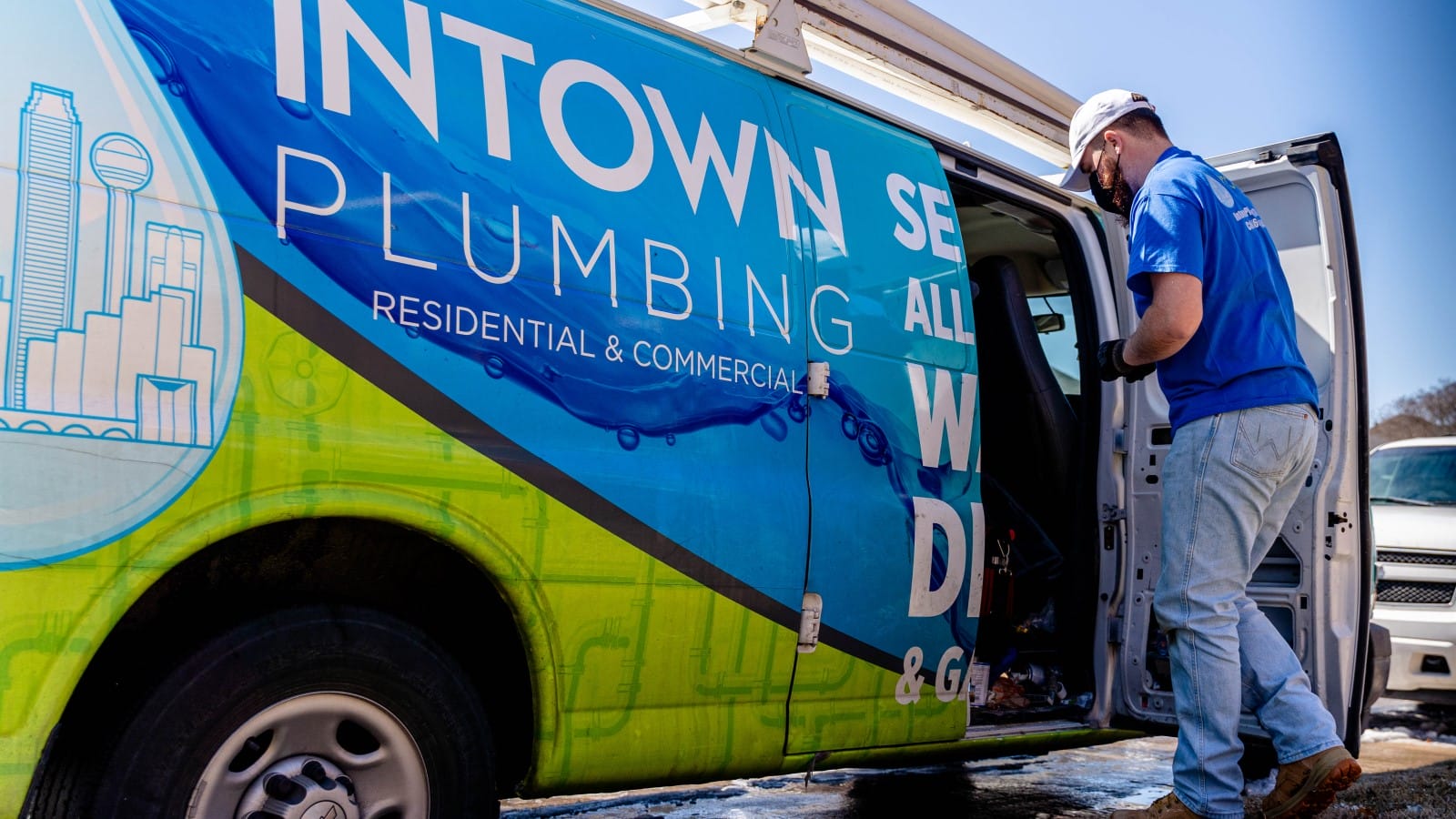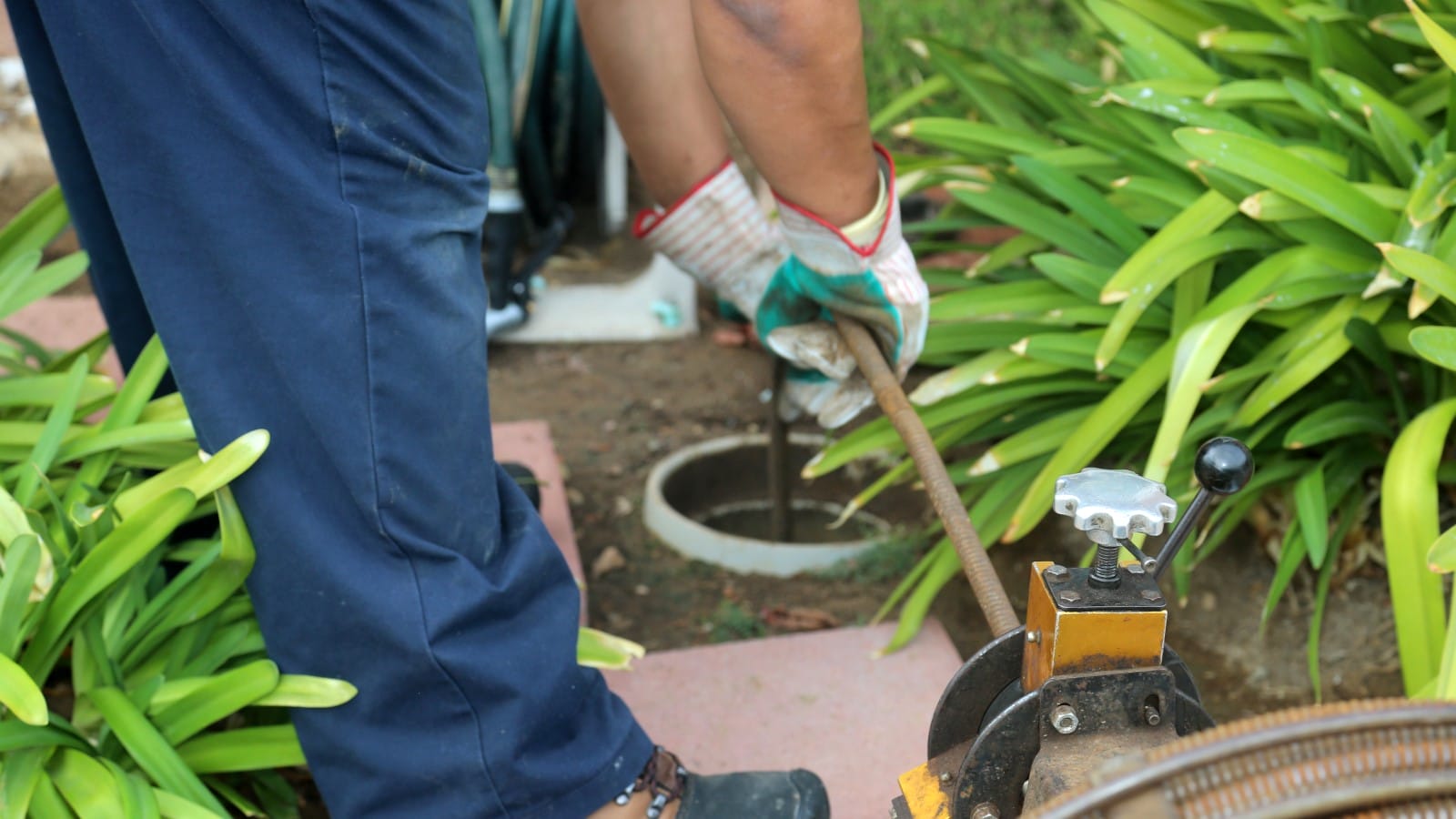What is a Hydrostatic Plumbing Test?
Let’s start with the basics. A hydrostatic plumbing test (sometimes called hydrostatic pressure testing) is a thorough and effective way to identify any problems resulting from foundation repairs.
It involves filling the entire plumbing system with water and pressurizing it, which allows a licensed plumbing contractor such as Intown Plumbing to identify any leaks or weaknesses in the pipes.
One of the advantages of hydrostatic tests is that they identify issues in the drainage system that may not be visible with a visual inspection. This type of test is essential after foundation repairs, as the work can cause shifting or movement in the plumbing system.
By understanding the importance of hydrostatic plumbing tests and their use after foundation repairs, homeowners can ensure that their plumbing system is in good working order and avoid potentially costly issues down the road. With the information in this article, you can learn the most important facts about a hydrostatic plumbing test (or hydrostatic pressure test), what to expect, and how to address any identified issues.
Expert Insight Into Hydrostatic Testing Process
Now that you understand the foundations of hydrostatic pressure tests, it’s time to dive deeper into that concept. Our company has been on the market for nearly ten years and has performed numerous hydrostatic pressure testing.
From that experience, we know that foundation issues, when they occur, can be highly damaging and very costly to repair. It is an expense most homeowners desperately want to avoid (also check out this preventative article on how to properly maintain your foundation).
Unfortunately, when foundation problems occur, they are often an inconvenient surprise and can be a financial burden.
Homeowners usually want to minimize repair costs while also guaranteeing the best results. That’s why they’re often reluctant to conduct plumbing tests when carrying out foundation repairs. And that’s a costly mistake.
You may view plumbing tests as an unnecessary expense when dealing with foundation issues, but they are crucial in correctly assessing and repairing the cause of the foundation issue.
Why do prominent foundation repair experts require hydrostatic plumbing tests? Why it’s essential if you’re dealing with foundation issues? Let’s find out!
The Benefits of Hydrostatic Plumbing Testing
A hydrostatic plumbing test is more comprehensive than a camera test and is the only test that allows the entire sewer system of your home to be examined at once while also bringing every single area of the system into the spotlight. It’s used by licensed plumbing contractors to determine if there is a leak in the system.
Conducting a Hydrostatic Plumbing Test: What to Expect
A hydrostatic pressure test performed by professionals is essential to keep your home’s foundation in good condition. The testing process consists of a few standardized steps. Here’s what you can expect from hydrostatic testing at your home.
- Typically, a licensed plumber performs the test from outside the house. They gain access to the home’s sewer system through the cleanout – the pipe that sticks up.
- However, in some older homes, the cleanout is not present. In these instances, the plumber would need to locate the sewer main in the yard and install a cleanout.
- Next, an inflatable ball is inserted in the main sewer line cleanout. This ball is inflated until it completely blocks the cleanout.
- After that, water is pumped into the home’s sewer system up to the slab level.
- If there is a significant leak in the system, the contractor will be unable to raise the water to the slab level. Even when the water rises to the slab level, it will soon start to fall if there is the slightest leakage.
- The contractor must wait 15 minutes to see if the water falls or maintains its pressure. The more the water level drops, the bigger the leaks in the system. If it doesn’t drop at all, there are no leaks.
If a leak is present, the next step is to detect the location of the leak. Depending on the size and type of leak, it may be found easily or not.
Hydrostatic Plumbing Tests: What They Reveal and Why You Need One After Foundation Repair
Plumbing tests are required by plumbing contractors to detect pre-existing plumbing leaks before a foundation is repaired. Plumbing tests are also necessary after the foundation has been fixed to ensure no new leaks could damage the foundation again.
It is vital because a plumbing leak could have been the cause of the foundation problem in the first place. So getting a test before and after a foundation repair is essential.
How is Your Home’s Foundation Connected to its Plumbing?
Excessive moisture around the home’s foundation will cause it to deteriorate. This moisture can come from leaking or broken water supply or sewer lines. If leaks are not detected, water can soak into the ground beneath a foundation and turn it into the mud.
It will cause the foundation to drop or slide. Leaks from a freshwater pipe may also flood the ground below the foundation, resulting in rapid soil erosion. And in areas with expansive clay soils, if the soil comes into contact with water, it could expand upwards and damage the foundation.
Hydrostatic plumbing tests are required before foundation repair to determine the plumbing state and if the plumbing caused the faulty foundation.
Foundation Repair Process
Repairing a damaged foundation is a significant work that involves installing reinforcing piers in a home. Sometimes, it requires the home’s foundation to be replaced entirely. Any major work on a home’s slab will affect the plumbing.
As the slab is lifted, the plumbing might stay embedded in the ground and tear away from the slab. Or even if it is not embedded, the plumbing can become misaligned. This is why foundation repair professionals require a plumbing test after foundation repair.
Without the test, the contractor cannot tell if there are leaks in the plumbing that can damage the foundation again.
As a result, the foundation repair company is unable to warranty the repair work they have done. However, they can give their warranty if a hydrostatic test is conducted and no leaks are detected. Moreover, doing a plumbing test helps the homeowner protect their home by preventing further damage to the foundation.
Preventing Plumbing Issues After Foundation Repair: Tips and Best Practices
And when foundation repair has been completed, and the hydrostatic test has proven no major issues, it’s worth preventing plumbing problems. Find some best practices for how homeowners can care for their sewer pipes.
One of the best ways to prevent plumbing issues after foundation repair is to stay proactive and take steps to maintain a healthy plumbing system. It can include things like regular plumbing checks, investing in high-quality plumbing fixtures and materials, and being mindful of what goes down your drains. That way, you can reduce the likelihood of plumbing problems arising after foundation repair.
Another important factor to consider is choosing a licensed and experienced plumbing contractor to conduct any necessary plumbing work, such as the hydrostatic plumbing test itself, as well as any repairs or maintenance that may be required. With the right approach to plumbing maintenance and care, you can protect your home and avoid costly repairs and disruptions.
Conclusions. Why You Should do a Plumbing Test
Repairing a home’s foundation costs thousands of dollars. Conducting a plumbing test, on the other hand, requires a few hundred dollars. Spending $200 – $500 can help you avoid paying thousands of dollars to repair a damaged foundation by a plumbing leak. Doing a plumbing test will prevent you from paying twice to fix the same problem.
If you’re having foundation issues and need help, reach out to our friends at Granite Foundation Repair.





